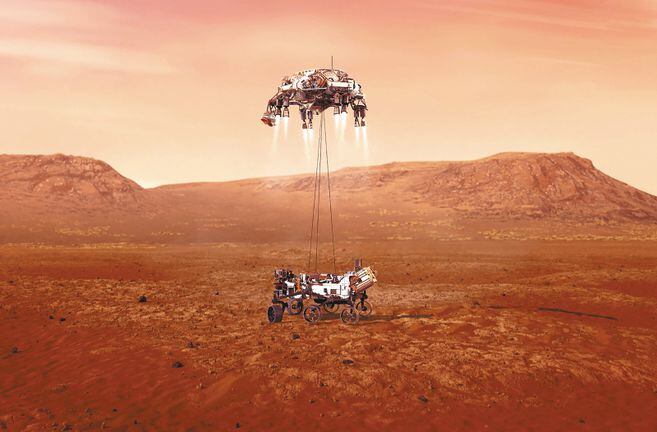
NASA will return to the red planet. This time it will do so with technologies it has never used and, for the first time, it will be broadcast in Spanish. The voice that will guide the Spanish-speaking public will be that of Caleña aerospace engineer, Diana Trujillo.
“The universe is a pretty big place. If we are alone in it, it would be a big waste of space “. This is one of the most famous phrases of Carl Sagan, the American astronomer and science communicator who inspired thousands of people around the world with his television program Cosmos.
Sagan not only motivated astronomers, astrophysicists or aerospace engineers, but he was also the driving force behind the creativity of many directors who brought to the big screen stories about space travel and life on other planets.
Although they may seem distant worlds, the world of science and fantasy allowed by art, institutions such as NASA are working on projects that bring these two worlds closer together.
Such is the case with Perseverance Rover, which left planet Earth on July 30 last year for Mars, with the intention of fulfilling the dream of scientists and artists: to find life on the red planet.
The mission that will put the rover on the neighboring planet is called Mars 2020, and on Thursday, February 18, a crucial stage of its development will take place, Perseverance will dock to the surface and begin its exploration with high-tech equipment that NASA had not used in previous trips.
Seven tools for exploring and collecting evidence, including a detachable helicopter from the vehicle, will be some of the innovations Rover will have for its investigations.
In addition, Mars 2020 Perseverance carries more cameras than any interplanetary mission in history, and the remote-controlled vehicle will dock in an area called Jezero Crater. The reason they chose this space is that about 3.5 billion years ago it was a river delta with rocks, sand dunes and rock fields that could have preserved organic molecules and other potential signs of microbial life.
If the speculation is true, this mission would be the first to prove that life exists on other planets. In addition, Rover will try to obtain important data about the geology and climate of Mars that could help scientists understand why, if at some point the red planet and Earth had some similarities, they became so different. .
Although it is expected to resolve many doubts with this trip, the landing that will take place on Thursday and the exploration that will take place accordingly, are only the first stage of a trip that is expected, for the first time in history, will have a return.
Perseverance will collect pieces of stone core and place them in test tubes to store in an unloading place, where a new trip prepared by the American space agency will collect them so that they can be studied on Earth.
Although NASA is optimistic about the results of the landing, it is important to note that only 50% of attempts to land on the surface of the neighboring planet, made by all space agencies in the world, were successful and the possibility is alive. That Perseverance does not achieve its goal.